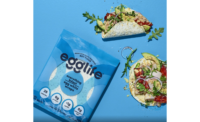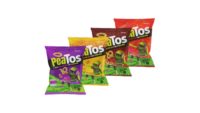Club Stores
They are the biggest of the “big boxes” operating on the lowest of margins. Contrary to recent industry reports that consumers are shopping “gingerly” — particularly on discretionary purchases — and despite that many retailers have reportedly been experiencing a “spending slowdown” since February, these retailers seem impervious to both. In fact, they are beating projections.
They are the warehouse clubs, sometimes referred to as “cash and carry” stores or simply “club stores,” and as a channel, they are in quite the enviable position lately. Collectively and individually, analysts have taken notice of the warehouse clubs’ strength at a time when so many other retailers are struggling.
Strong and stable
Costco, the sales leader, had a 6 percent jump in
comp store sales for June; this beat Wall Street’s estimate of 5.8
percent, according to Reuters. What’s more, the average customer
transaction rose 3.5 percent during the month, Costco reported. Product
segments with the strongest sales included computers, televisions, jewelry,
deli items and frozen foods. Costco is also the largest retailer of wine in
the country. Last fiscal year it sold $390 million in wine, according to
the company, or nearly half the U.S. total.
Wal-Mart-owned Sam’s Club, with the highest
number of units (579 as of Jan. 31, 2007) but second to Costco in annual
sales, saw the biggest comp store gains in June at 9.6 percent. The company
has made a splash of its brand “reinvigoration” —
building on its foundation by deepening relationships with small business
owners and broadening its consumer appeal by offering items with higher
quality and uniqueness. It has specifically highlighted “affordable
luxury” consumables such as its bakery’s new bistro cake,
covered in authentic, rich ganache. Like its parent, Sam’s is a price
leader, and charges no more than 12 percent markup on all items (others are
typically in the 14 percent range, some going as high as 18 percent on
certain items).
| Channel Leaders* | ||
| Chain |
2006 Annual Sales (in billions) | % change (2005-2006) |
| Costco Wholesale Corp. | $60.1 | 13.6% |
| Sam’s Club | $41.6 | 4.5% |
| BJ’s Wholesale Club Inc. | $8.5 | 7.2% |
| Sources: Company reports and STORES magazine | ||
Easing back on the gas
Meanwhile, No. 3 player BJ’s was not that far off
Costco’s June comp store sales increases — with 5.3 percent
gains. BJ’s attributed 1.4 percent to gas sales, which the company
generally prices below average.
This is a successful trend across the entire channel
of late — by accepting a lower profit on gas sales, more traffic is
driven into club stores.
For BJ’s, traffic increased by 2 percent in June,
and the average transaction rose 3 percent, excluding the deeply discounted
gasoline. BJ’s food sales, which the company reports as 60 percent of
its sales, increased 6 percent, its strongest increase in two years.
But life’s essentials are not the only focus of
the channel. Typical customers, which have the highest average incomes of
any retail channel, often speak of not being able to leave the clubs
without spending $100 — or more.
Even Sam’s Club, with Wal-Mart’s low-price
focus as its heritage, is still completely savvy to a typical club
customer’s scenario of being able to buy “extra
luxuries.”
Candy goes ‘clubbing’
But how about finding that perfect bite of premium
chocolate while shopping for bulk cases of soda, bottled water, or even
more appropriately, cases of wine? Premium chocolate and wine are a great
match, but can a club store capitalize on that?
“I don’t think club stores typically think
of themselves as market developers, but they could be in confections,
especially with the fast and furious product introductions right
now,” says Jim Corcoran, vice president of trade relations for the
National Confectioners Association. “There’s such an
opportunity for more chocolate and wine merchandising. The club stores are
some of the biggest sellers of wine out there, they need to take advantage
of that with ‘giftable’ and premium chocolates, right alongside
wine displays.”
Traditionally, club stores have been known for their
candy for resale and bulk offerings, particularly everyone’s seasonal
stock-up favorite — Halloween candy. It is true that during fourth
quarter, the channel is great at presenting gift and boxed chocolates and
“entertainment” sweets, but it has not been a source of impulse
candy the way so many alternative channels, even those that have nothing to
do with consumables, are doing.
And therein lies the biggest confectionery opportunity
for these biggest of big-box stores, according to Corcoran —
impulse-driven, single-serve candy.
“It doesn’t necessarily fit with their
merchandising philosophy, but if they were to have any sales at or near the
front end, it would be a major upside where they could increase candy sales
by 25 percent, our research shows,” he says.
Warehouse style or not, candy offerings are terribly
tempting to consumers waiting to check out. And these more upscale
consumers are sure to bite, literally, if given some premium single-serve
selections.
|
SWOT Analysis
Strengths
A format that works even in tough retail times
Big-earner customers The largest basket rings of any channel
Weaknesses Not seen as market developers
Lacking in display/cross-merchandising efforts Opportunities Chocolate and wine merchandising
Impulsive, single-serve confections Threats More convenient shopping options
Will consumers always want big and bulky? |
|
Wholesale club Performance in Confectionery
2006 Data Wholesale Club Candy Sales (excluding Wal-Mart): $2.1 billion*
Candy Sales Change (2006 vs. 2005): +0.3%
Share of $28.9 billion Confectionery Market: 7.3%
*estimate Sources: Sales figures are compiled by National Confectioners Association) based on input from Information Resources, Inc. NCA/CMA Monthly Shipment Reports and U.S. Department of Commerce
|
|
Mass vs. Supercenter Number Cruncher*
52% — Household Penetration (up from 48% in 1997)
$84 — Average Dollars Spent per Trip (up from $66 in 1997)
11 — Average Number of Shopping Trips per Year (up from 9 trips in 1997) *For 2006 Sources: The Nielsen Company’s “U.S. Consumer Dynamics Across Channels & Categories,” April, 2007/Homescan 2006
|


